Ancient History Of New Year’s Celebrations And Traditions From Around The World
A. Sutherland - AncientPages.com - Have you ever wondered how our ancestors celebrated New Year's Eve worldwide? The history of New Year celebrations goes back to ancient times, and some traditions have survived for thousands of years.
Babylonian Akitu Festival
Front of the throne base of Shalmaneser III of Assyria, showing the Assyrian king and Marduk-zakir-šumi I of Babylon shaking hands in a public display of Assyro-Babylonian friendship. From Kalhu. Iraq Museum. Credit: Osama Shukir Muhammed Amin FRCP(Glasg) - CC BY-SA 4.0
The earliest known New Year celebrations were in Mesopotamia and date back to 2000 B.C. Following the first New Moon after the vernal equinox in late March, the Babylonians of ancient Mesopotamia would honor the rebirth of the natural world with a multi-day festival called Akitu.
During the Akitu, statues of the gods were paraded through the city streets. All significant rites were enacted to symbolize their victory over the forces of chaos. The Babylonians believed the world was symbolically cleansed with the help of rituals and recreated by the gods. The goal was to prepare for the New Year and spring return.
Wepet Renpet: Ancient Egyptian New Year
Goddess Seshat from the back of the throne of a seated statue of Ramesses II, Luxor temple. Credit: Jon Bodsworth - Public Domain
In ancient Egypt, New Year was closely tied to the Nile River. The Egyptian New Year celebration Wepet Renpet which means the year's opening, was based on the annual flooding of the Nile River.
In July, ancient Egyptian priests watched how Sirius, the brightest star in the night sky, became visible after a 70-day absence. The return of Sirius marked the New Year and the coming flood. It was then time to reset the calendar and celebrate a new year.
The New Year was a time of rebirth and rejuvenation. It was honored with feasts and special religious rites.
Archaeologists found evidence at the Temple of Mut that New Year celebrations in Egypt also included the "Festival of Drunkenness."
Samhain celebrations in Ireland. Credit: Wikipedia -CC BY-SA 4.0
The Celts celebrated their New Year on November 1. The Festival of Samhain marked the end of the Celtic year and the beginning of the new one and can be seen as the equivalent of New Year's Eve. It was also a time when the veil between this world and the Otherworld was so thin that the dead could return.
Many people lit bonfires to keep the evil spirits at bay. Food was set aside for ancestors. Often a torch was lit and carried around the boundaries of the home and farm. It had symbolic but also a vital meaning to protect the property and residents against the spirits throughout the winter.
Samhain is one of eight annual festivals commonly celebrated by pagans of various traditions, along with Yule, Imbolc, Ostara, Beltane, Midsummer, Lughnasadh, and Mabon.
Nowruz - Persian New Year
A 16th-century painting of Tahmasp I and Humayun celebrating Nowruz. Isfahan-Chehel-Sotoon-Museum. Credit: Public Domain
The history of Nowruz, the Persian New Year, can be traced to the Zoroastrian religion. Historical records show Nowruz's celebration dates back at least as far as the 6th century B.C. and the rule of the Achaemenid Empire founded by Cyrus the Great, one of the most outstanding figures in human history. Nowruz is still celebrated today in Iran and other parts of the Middle East and Asia.
Nowruz always begins on the first spring day marked by the vernal equinox, or Tahvil. On that day -which may occur on March 20 – 21 or 22 – the Sun crosses the celestial equator.
To Zoroastrians, the return of spring represented an annual victory for the spirit of the Sun. It was when the Sun began to regain strength and overcome winter's cold and darkness, and there was a renewal of growth and vigor in nature. About 300 million people celebrate Nowruz, and many of its ancient traditions—particularly the use of bonfires and colored eggs—remain a part of the modern holiday.
Chinese New Year And Nian
The largest Chinese New Year parade outside Asia in Chinatown, Manhattan. Credit: Patrick Kwan - CC BY 2.0
The tradition of celebrating New Year started over 3,000 years ago during the Shang Dynasty. An ancient legend tells that Nian, a bloodthirsty creature, used to prey on villages every New Year. To frighten the hungry beast, the villagers took to decorating their homes with red trimmings, burning bamboo, and making loud noises. The ruse worked, and the bright colors and lights associated with scaring off Nian eventually integrated into the celebration.'
See also:
Hogmanay: Scotland's New Year Celebration Inherited From The Vikings
The Chinese New Year celebrations last 15 days. People clean their houses to rid of bad luck, and some repay old debts to settle the previous year's affairs.
Ancient Romans' New Year
Roman coins depicting Janus. Credit: Classical Numismatic Group, Inc. - CC BY-SA 3.0
In the old Roman calendar, the first month of the year was Mars and their New Year was a festival called Calends or Kalends. God Janus represented beginnings and ends; his name means "gate" or "door." In times of war, the gates of his temple were kept open, and in peacetime, they were barred. People decorated their homes with lights and greenery and gave each other gifts carefully chosen for their luck-bringing properties.
Ancient Romans should think good thoughts during the New Year's celebrations and avoid gossiping.
The Roman calendar was constantly being tampered with by the Emperors. It became out of synchronization with the Sun. To set the calendar right, the Senate, in 153 B.C., proclaimed that the first day of a New Year would be observed on January 1.
The two-faced god Janus was lord of this day. January is named after him.
Ancient Romans continued to change their calendar until 46 B.C. when Julius Caesar established what was later known as the Julian Calendar. Again, it designated January 1 as the New Year. However, Caesar was obliged to allow the previous year to continue for 445 days to synchronize the calendar with the Sun.
Updated on December 26, 2023
Written by – A. Sutherland - AncientPages.com Senior Staff Writer
Copyright © AncientPages.com All rights reserved. This material may not be published, broadcast, rewritten or redistributed in whole or part without the express written permission of AncientPages.com
Expand for referencesMore From Ancient Pages
-
 Ancient DNA Has Traced Large-Scale Migrations Into Bronze Age Britain And The Emergence of The Celtic Language
Archaeology | Dec 30, 2021
Ancient DNA Has Traced Large-Scale Migrations Into Bronze Age Britain And The Emergence of The Celtic Language
Archaeology | Dec 30, 2021 -
 Codes Of Ur Nammu: World’s Oldest Known Law Code
Ancient History Facts | Mar 11, 2016
Codes Of Ur Nammu: World’s Oldest Known Law Code
Ancient History Facts | Mar 11, 2016 -
 Glima – Ancient Martial Art Practiced By The Vikings Is Still Popular Today
Ancient Traditions And Customs | Mar 7, 2017
Glima – Ancient Martial Art Practiced By The Vikings Is Still Popular Today
Ancient Traditions And Customs | Mar 7, 2017 -
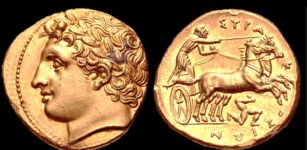 Agathocles Of Syracuse: Sicilian Ruler Who Committed Numerous Crimes Saved And Extended Sovereignty Of Sicily
Featured Stories | Jul 26, 2019
Agathocles Of Syracuse: Sicilian Ruler Who Committed Numerous Crimes Saved And Extended Sovereignty Of Sicily
Featured Stories | Jul 26, 2019 -
 First Animals On Earth Could Have Evolved Much Earlier Than The Oldest Fossils Suggest
Fossils | Oct 13, 2022
First Animals On Earth Could Have Evolved Much Earlier Than The Oldest Fossils Suggest
Fossils | Oct 13, 2022 -
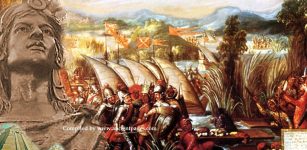 Cuauhtémoc: Brave And Determined Ruler Of Tenochtitlan And The Last Aztec Emperor
Featured Stories | Feb 28, 2018
Cuauhtémoc: Brave And Determined Ruler Of Tenochtitlan And The Last Aztec Emperor
Featured Stories | Feb 28, 2018 -
 Ancient Liangzhu Culture Collapsed Due To Climate Change – New Study Says
Archaeology | Nov 25, 2021
Ancient Liangzhu Culture Collapsed Due To Climate Change – New Study Says
Archaeology | Nov 25, 2021 -
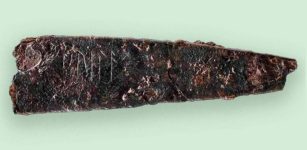 2,000-Year-Old Knife With Denmark’s Oldest Runes Found On Funen
Artifacts | Jan 22, 2024
2,000-Year-Old Knife With Denmark’s Oldest Runes Found On Funen
Artifacts | Jan 22, 2024 -
 Shennong – Chinese ‘King Of Medicines’ Who Invented Farming Tools And Herbs For Treating People’s Diseases
Chinese Mythology | Oct 13, 2021
Shennong – Chinese ‘King Of Medicines’ Who Invented Farming Tools And Herbs For Treating People’s Diseases
Chinese Mythology | Oct 13, 2021 -
 London Is Twice As Old As Previously Thought – New Discovery Reveals
Archaeology | Apr 9, 2020
London Is Twice As Old As Previously Thought – New Discovery Reveals
Archaeology | Apr 9, 2020 -
 5th-Century Tomb With Finds Of Historical And Artistic Value Discovered In Eastern Bohemia
Archaeology | Mar 8, 2021
5th-Century Tomb With Finds Of Historical And Artistic Value Discovered In Eastern Bohemia
Archaeology | Mar 8, 2021 -
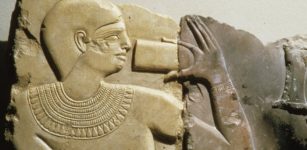 Mentuhotep II – The 11th Dynasty’s Pharaoh Who Reunited Egypt And Established The Middle Kingdom
Featured Stories | Oct 27, 2021
Mentuhotep II – The 11th Dynasty’s Pharaoh Who Reunited Egypt And Established The Middle Kingdom
Featured Stories | Oct 27, 2021 -
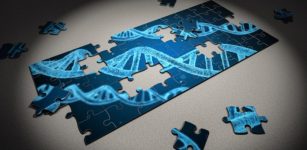 Ancient DNA Reveals Some Northern Europeans Came From Siberia
Archaeology | May 13, 2019
Ancient DNA Reveals Some Northern Europeans Came From Siberia
Archaeology | May 13, 2019 -
 Mysterious Ancient City Of Ebla That Existed Thousand Years Before Biblical Kings David And Solomon
Biblical Mysteries | Aug 14, 2015
Mysterious Ancient City Of Ebla That Existed Thousand Years Before Biblical Kings David And Solomon
Biblical Mysteries | Aug 14, 2015 -
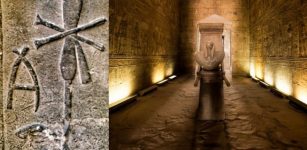 Merneith: Mysterious Queen In The Land Of The Pharaohs Could Be Earliest Attested Female Ruler
Featured Stories | Mar 20, 2018
Merneith: Mysterious Queen In The Land Of The Pharaohs Could Be Earliest Attested Female Ruler
Featured Stories | Mar 20, 2018 -
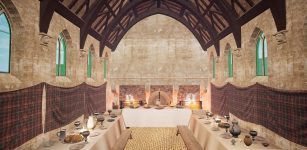 Lost Medieval Home Of The Lords Of The Isles – Reconstructed Virtually
Archaeology | May 29, 2019
Lost Medieval Home Of The Lords Of The Isles – Reconstructed Virtually
Archaeology | May 29, 2019 -
 Ancient DNA Sheds Light On How The Caribbean Islands Were Settled
Archaeology | Jun 24, 2020
Ancient DNA Sheds Light On How The Caribbean Islands Were Settled
Archaeology | Jun 24, 2020 -
 Neanderthals Vanishing When Homo Sapiens Emerged In Europe Was Coincidental – Are Herbivores The Answer?
Evolution | Sep 29, 2023
Neanderthals Vanishing When Homo Sapiens Emerged In Europe Was Coincidental – Are Herbivores The Answer?
Evolution | Sep 29, 2023 -
 On This Day In History: Joan Of Arc Enters Orleans, The City Besieged By The English – On Apr 29, 1429
News | Apr 29, 2016
On This Day In History: Joan Of Arc Enters Orleans, The City Besieged By The English – On Apr 29, 1429
News | Apr 29, 2016 -
 Mystery Of The 2,000-Year-Old ‘Urn Burial’ Ceremonies: 113 Tombs Discovered Near the Ancient City Of Fudi
Archaeology | Oct 11, 2016
Mystery Of The 2,000-Year-Old ‘Urn Burial’ Ceremonies: 113 Tombs Discovered Near the Ancient City Of Fudi
Archaeology | Oct 11, 2016







